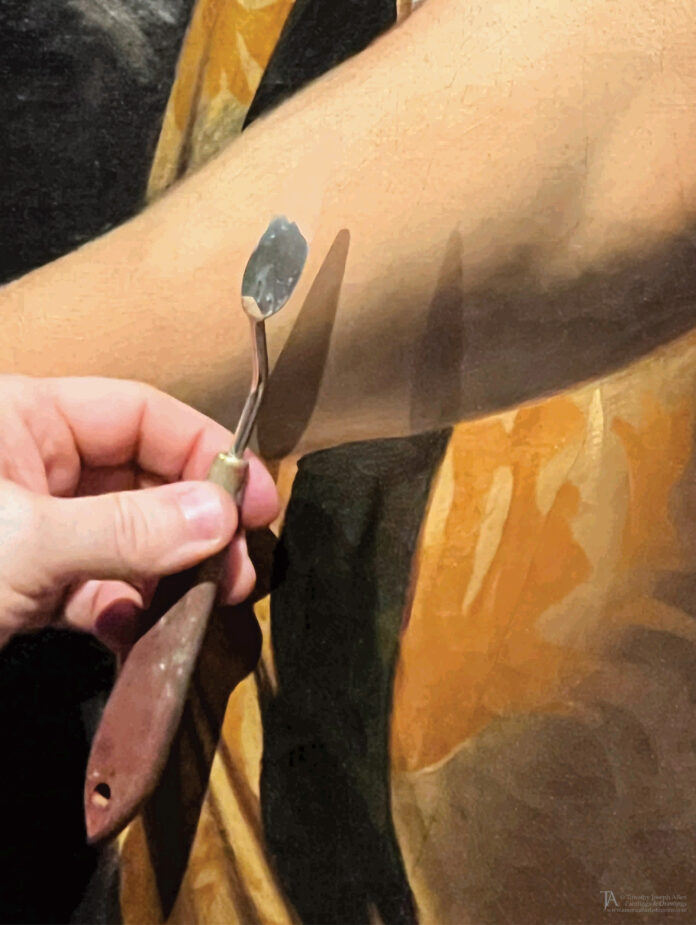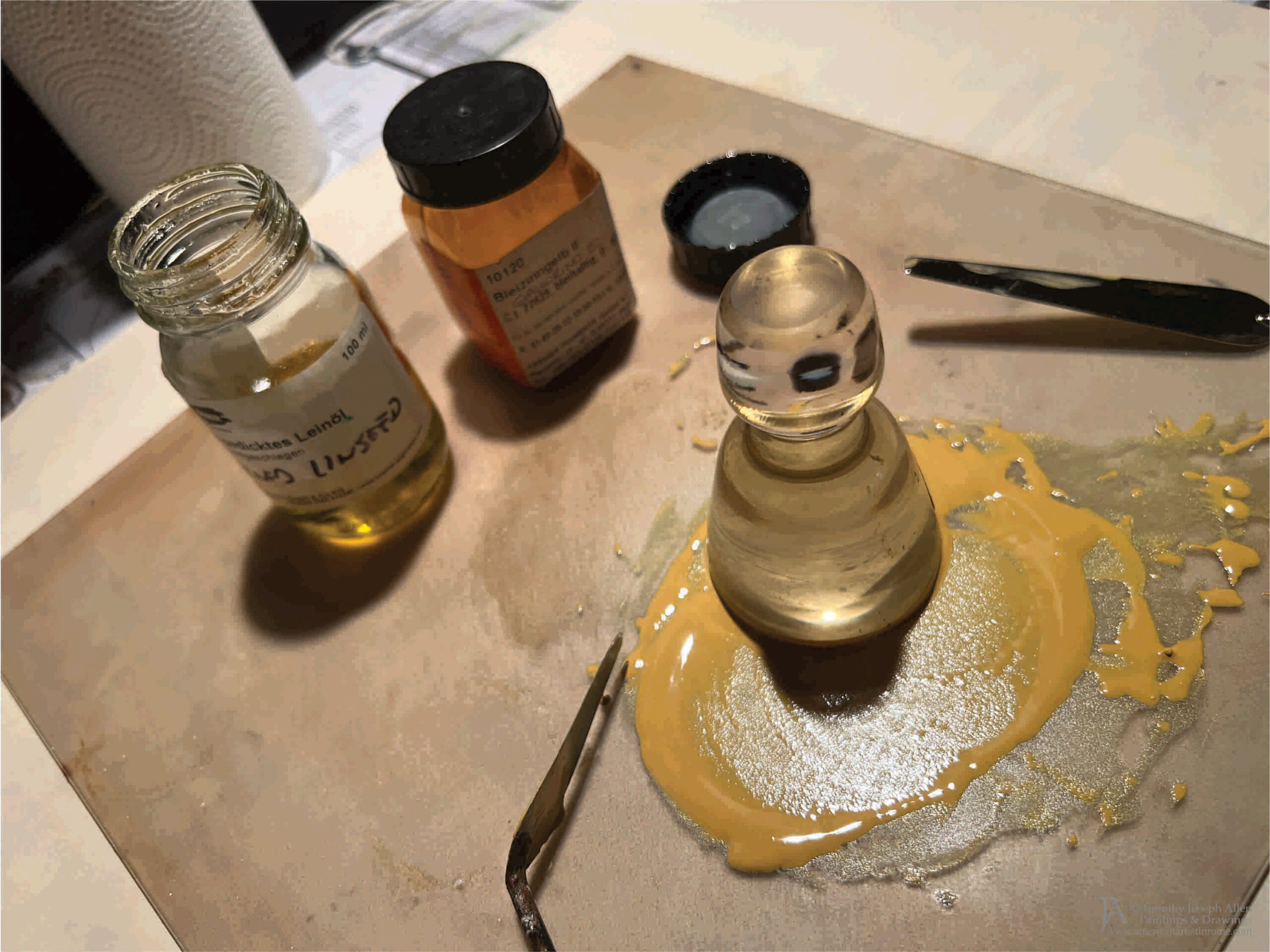
Welcome to Part 2 of a three-part series by Timothy Joseph Allen, MFA, on Caravaggio and bridging the gap between technical analysis, theory, and performance. Read “Decoding Caravaggio, Part 1” here.
Decoding Caravaggio, Part 2
by Timothy Joseph Allen, MFA
www.americanartistinrome.com
Quest for the Holy Grail of Flesh Tones: Lead-Tin Yellow Types I and II
There is a legendary quote attributed to Delacroix known within the circles of contemporary figurative painters: “Give me mud and I will make of it the skin of Venus, but you must let me choose the colors that surround it.”(7) The intended meaning is simple: no one color equates to flesh and many colors can serve the illusion of ‘skin’ as long as it is given the proper context. If taken at face value, I imagine this proclamation was also likely meant as a retort to painters who, like me, have convinced themselves that there must have existed a special combination of pigments and process for painting luminous flesh in the 16th and 17th centuries.
(7) I find no credible source for this quote. In fact, I find that many websites quote only the first part, i.e., “Give me mud and I will paint the flesh of Venus,” thus stripping it of context and changing the meaning.
However, my searches for the actual source of this attribution come up short and I find no such quote contained within The Journal of Eugène Delacroix. Instead I find within it passages that declare a shared fascination with the flesh tones from previous centuries. For example, he writes:
“It is difficult to say what colors were employed by men like Titian and Rubens to produce those flesh tones which are so brilliant and have remained so, especially those half-tints in which the transparence of the blood under the skin makes itself felt despite the gray that every half-tint brings with it. For my own part, I am convinced that they mix the most brilliant colors in order to produce them.” (8)
(8) Delacroix, Eugène. The Journal of Eugène Delacroix. Hacker Art Books, New York. 1980. P. 608. Internet Archive. Accessed 27 May, 2024
While it is true I have became more sympathetic to the concept of ‘color relativity’ and less militant in finding the proverbial ‘holy grail’ of flesh tones—those ‘colors that produce brilliant flesh’, as Delacroix put it— I would be slow to argue that my saddle has gone cold; should something whisper evidence of a recipe, I am ready to ride.
Take for example the matter of lead-tin yellow, also known as giallorino. In truth, there are two types of lead-tin yellow: lead-tin yellow type I and lead-tin yellow type II. I know this only because of my studies of technical analyses and not because of any former experience with both (due to its lead content, these pigments, like lead white itself, is an increasingly difficult product to acquire). I also know that what distinguishes the two types is that one contains the element antimony (type II) while the other does not.
What I did not know—and herein lies one of the fundamental reasons for enabling this kind of collaboration and engaging in such an experiment—is that there is a difference between the two in terms of color, value, and chromatic intensity. Lead-tin yellow type I is a very light and pale yellow (only slightly darker in value than a lead white), whereas lead-tin yellow type II is darker in value, with a more golden-kind of yellow, making it easier to push a color like hematite toward an orange color.
Had I relied only on a description of the chemical make-up of the two types, I might never have understood the difference in practical terms. Instead, I only fully appreciated the difference after getting my hands on both types and then grinding them into pigments in the studio (figure 2).

The result of mixing lead white and lead-tin yellow type II, together with the hematite previously mentioned, was remarkable: a naked-eye comparison of the mixture with the actual painting revealed some near perfect matches with the flesh tones in the original painting (figure 3, shown at top).
Yes, the age of the painting must be taken into consideration. Yes, oil paint darkens and yellows over time, and the color and value we see now probably was not the color and value that Caravaggio saw when he applied the paint. But this discovery has confirmed my suspicion that Caravaggio’s flesh tones were not complicated mixtures and that, indeed, a formula does exist. Dare I claim the ‘grail’?
Stay tuned! Soon we’ll publish Part 3 of this article, “The Cook’s Apprentice: Education through Observation.”




